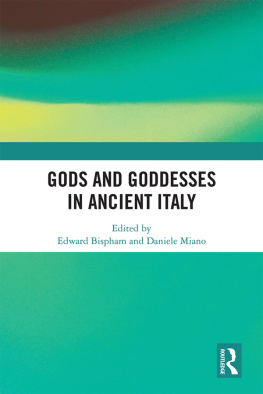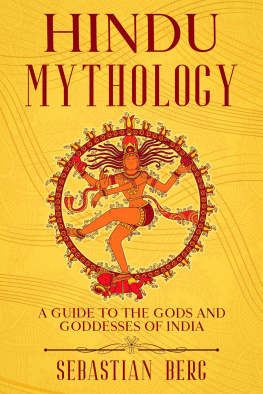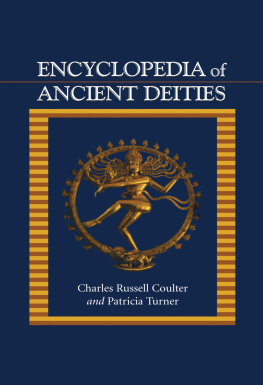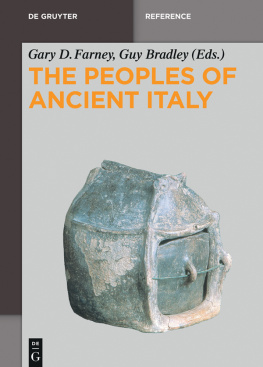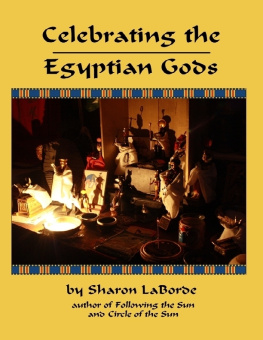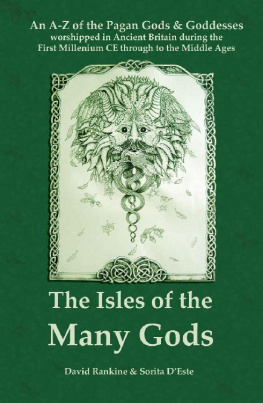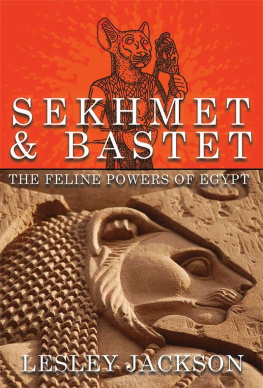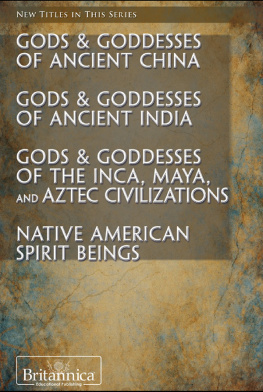
1
Italic Ceres?
Federico Santangelo
In his authoritative and idiosyncratic survey of Italic religions the late A. L. Prosdocimi pointed out that Ceres is the most complex divine figure in that domain.
Third, this goddess confronts us with issues of definition, on several levels. First, the problem of how to compare various different cults in a range of different contexts: Ceres is worshipped in Rome, * Kerre- is mentioned in the Agnone Tablet (in the dative Kerr ), * Keres Arentika is invoked in the curse tablet from the Fondo Patturelli at Capua ( ImIt Capua 34).
Things are unduly complicated, in this respect, by a deep-seated tendency on the part of modern historiography. It is not unusual to find references to the sphere of Ceres ( ambito cererio ) of several goddesses who are attested across the Italian peninsula and have no direct connection with Ceres or her cult, in the same way in which some speak of a sphere of Jupiter, an ambito giovio , to refer to male deities. The underlying assumption of the sphere of Ceres model is that, in any given cluster of gods, there is a female deity whose main remit is fertility and prosperity and who may fairly be assimilated with Ceres; similar considerations may be applied to assimilating male deities to Jupiter.
More broadly, the evidence for Ceres and the modern interpretations that have been put forward test the ways in which we categorise what is Italic, in relation to, and sometimes in opposition to, what is Roman or Greek. This is apparent in the case of Rome, where some sacra that are explicitly defined as Graeca are associated with Ceres and put under the charge of foreign priestesses. Those who took up arms against Rome in 91 BC might have disagreed with that contention, but the view that disentangling different layers in the practice of cults in late Hellenistic Italy is a hopeless undertaking is very productive.
Having set these premises, the present discussion shall not engage any further with the notion of ambito cererio , or similar constructions, and will be confined to Ceres and to deities that have a demonstrable affinity with her, without establishing any hierarchies, and without viewing the sphere of Ceres as a structural element of Italian religion. Its focus will be on the roles of Ceres in Republican Italy, a geographical context that is strongly affected by the growing influence of a regional power. It will end with a suggestion on a point of periodisation.
Before discussing some specific instances, however, it is worth addressing another general issue. Ceres has often been regarded as a typically functional deity, who is associated with the dimensions of fertility and generation (see Miano, this volume, on functions). G. Radke has even established a direct linguistic link between the theonym and the function of the goddess: Ceres is the personification of the idea of fertility that is conveyed in the stem * ker- , encapsulated in a feminine name. If Devotos hypothesis is correct, Ceres should also be included within this cluster of deities, and emerges as a divine figure that is eminently suited to the conceptual approach. Even if, on the contrary, the name Ceres were feminine since its origin, it is still possible that it was the personification of an abstract concept, and one that had the broadest possible application: that of fertility, which could reflect both on agriculture and on birth and reproduction.
This is the pattern that V. Bellelli has recently sketched for the Etruscan deity Vei, whom he regards as an abstract personification of fertility that is mainly relevant to the agrarian dimension, as the material from the Vigna Parrocchiale site at Caere might indicate, and to that of fertility, as suggested by the series of votive terracottas from Veii, Caere, and Gravisca and, more cogently, by the womb-shaped ones from Fontanile di Legnisina at Vulci.
Ceres is, as is well known, a goddess very frequently associated with other deities. This is unsurprising, since she pertains to such a central concept like fertility, a feature that she shares with a number of other Italic gods, and one which allows for a remarkable degree of fluidity. Devoto, for instance, evocatively spoke of the series of deities mentioned in the Agnone Tablet as a constellation that can at times come to include new satellites. A deity associated with the concept of fertility, therefore, has important prerogatives regarding the political order of the community, and its infrastructure of interdependence. That is a fascinating area of enquiry, even if one held a different view on the extent and pace of Hellenisation in early Republican Rome.
One of the premises of this volume is a welcome reaction to the idea of divine functions, and Ceres has often been subjected to that paradigm, in its various inflections, often influenced by Dumzilian trifunctionalism. She has repeatedly been placed within divine triads of various sorts: Ceres-Liber-Libera in Rome, and Jupiter-Heracles-Ceres at Agnone. There is much to be said in support of the sound conclusions offered by E. Campanile in an important overview of the Italic deities, which unapologetically reflects an empiricists approach, and emphasises the importance of not applying general conclusions to a vast geographical remit, and to focus and conduct the analysis on specific local contexts. Incidentally, there is a slight, but important, difference between this model and that of the constellation envisaged by Devoto, which implies a hierarchical bias.
Let us now turn to the place of Ceres in a feature of Roman religion that had a central place in the relationship between Rome and Italy throughout the Republican period: public prodigies. The goddess plays a prominent role in expiatory rites on a number of occasions, some of which receive considerable attention in the literary evidence: in 217 (22.10.9), after the crushing defeat at the Trasimene, when the Sibylline Books prescribed that she be included in a lectisternium along with 11 other deities; in 191, when the expiation of prodigies recorded in Tarracina, Amiternum, Minturnae, and the mouth of the Volturnus was specifically addressed to Ceres, as recommended by the Sibylline Books, and a ritual fasting, the ieiunium Cereris , was introduced, along with nine days of ritual celebrations, the nouemdiale sacrum (36.37.45). The temple of Ceres, Liber, and Libera in the city of Rome was also the venue of a prodigy in the spring of 182 (40.2.14), which was part of a longer series, for which ritual expiation was conducted on the advice of the haruspices . It was in turn the focus of prodigies on a number of occasions, such as in 99 (Obs. 46), in 92 (Obs. 52), in 84 (App., BC 1.78), and in 32 (Cass. Dio 50.8.15). Ceres-Demeter and Proserpina-Kore also have a prominent place in the ritual prescriptions set out in the two Sibylline oracles preserved in Phlegon of Tralles De rebus mirabilibus , which are dated to 125 BC. On that important level of religious integration between Rome and Italy the cycle of prodigy reports and expiations Ceres does not play a significant role at all.
The deity, at any rate, is relevant to other spheres of Roman public divination. The very introduction of the cult of Ceres into Rome is of course connected by the literary tradition to a consultation of the Sibylline Books, in 496, when divine guidance was sought in response to a grain shortage, and the Books recommended that Ceres, Libera, and Liber be propitiated: this led in due course to the dedication of their temple in Rome (the response of the Books, as reported by Dionysius, implies that a cult of those deities already existed in the city).
Another notable instance points to a connection between Ceres and the Sibyl-line lore. In 133, in the aftermath of the assassination of Tiberius Gracchus, in response to some prodigies, the Books were consulted and the Xuiri sacris faciundis singled out a recommendation whereby the most ancient Ceres had to be conciliated. The priests therefore looked well beyond the distinguished shrine of the goddess in Rome and went all the way to Henna, in Sicily. In a recent discussion, John N. Dillon has downplayed the link between the political tension in Rome that followed the death of Gracchus and the choice to seek the appeasement of the Sicilian goddess, and has stressed the link with the slave war that beleaguered Sicily in 133 and 132. Far from being a response to Roman religious or political problems, it was an attempt to establish a direct communication with a Sicilian deity and her sanctuary. this tension is not easy to solve in a context where the source material remains highly fragmentary. Shortly before discussing the visit of the decemuiri to the sanctuary, Cicero points out that the Ceres of Henna had long been associated with a sequence of prodigies, which had strongly asserted its power and significance ( Verr . 2.4.107): no evidence survives for that, nor on the ritual action that was taken in response to them, whether in Sicily or (less probably) in Rome.
Next page
